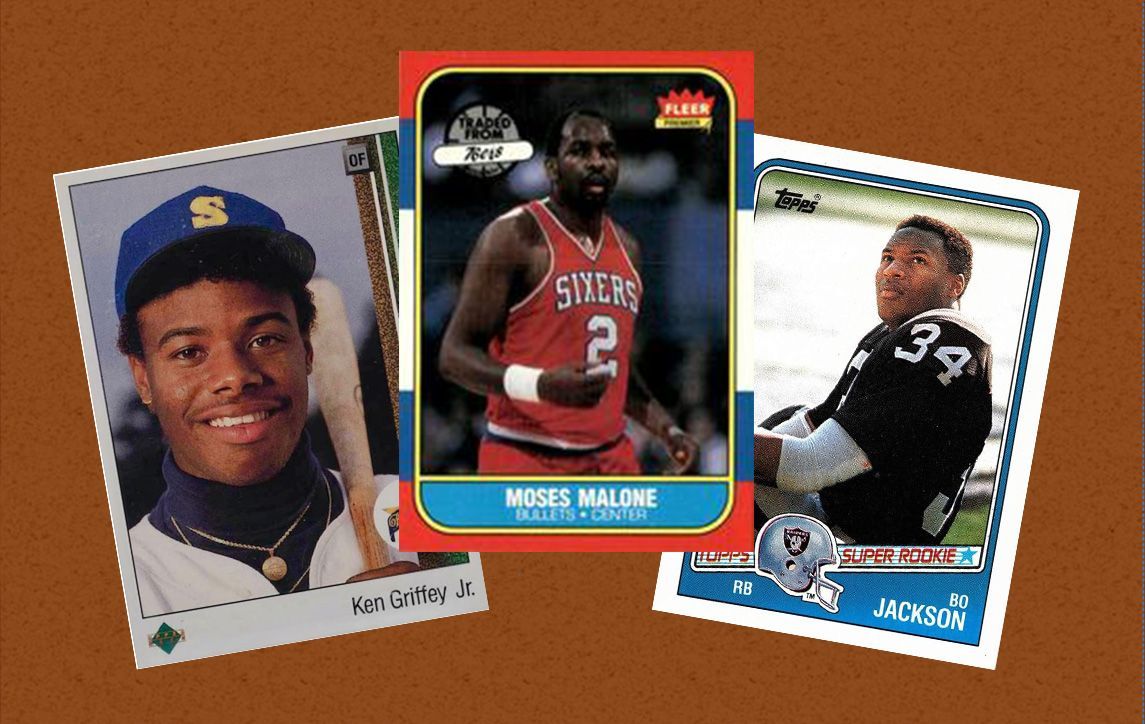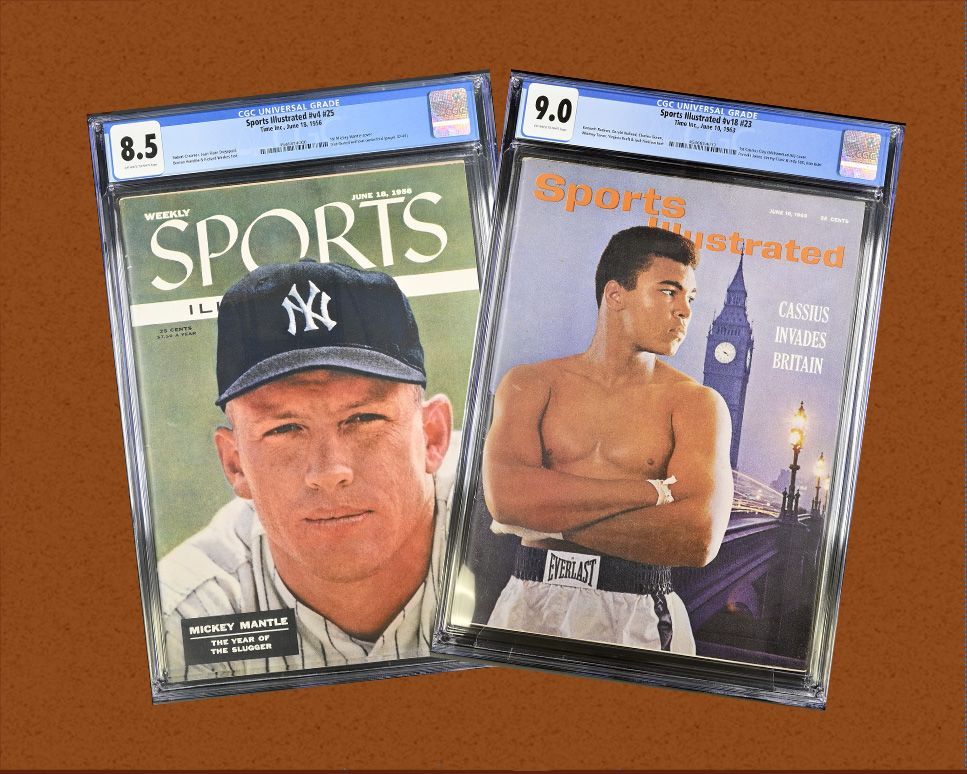What Every Collector Should Know About Protecting your Sports Cards
What Every Collector Should Know About Protecting your sports cards
If you're serious about collecting, then you already know it's not just cardboard. Your cards are history, memory, investment. Whether it's a 1986 Jordan rookie or a complete Topps set from the '70s, your collection holds real weight. Emotional and financial.
But here’s the deal: no matter how rare or valuable your cards are, they’re one bad decision away from being damaged, devalued, or even lost. Protection isn’t optional. It’s part of being a responsible collector. And if you’ve been winging it with a few plastic sleeves and a shoebox? It’s time to tighten that up.
Why Protection Isn’t Just for High-End Cards
You don’t wait until your car’s worth $100k before you start locking it. The same goes here. Whether it’s a $5 card or a $5000 one, protection is about preserving future value, not just current price.
Even base cards from modern sets can grow in value over time. If they're kept in great shape, they’re tradeable, sellable, and, in some cases, gradable later. Hyper Relic sees this all the time, collections brought in years after being tossed in binders, many with bent corners, surface wear, or edge whitening that tanks their value. A little care early on saves a lot of regret later.
The Basics: Sleeves, Toploaders, and When to Use Them
Let’s get something straight: penny(soft) sleeves are not a cheap shortcut; they’re the foundation. Every raw card, regardless of value, should go straight into a clean, snug penny sleeve as soon as it’s pulled or acquired.
From there, you’ve got options. For standard protection, a penny sleeve inside a toploader is the gold standard. For higher-end pieces, especially if you're preparing for grading or dealing with foil/holo surfaces, go for a semi-rigid holder like a Card Saver. That’s what PSA and other grading services prefer.
We always recommends clients sleeve up everything, even commons in good condition. Why? Because future value is unpredictable. And because habits matter. Protect the $2 cards now, and you’ll never mishandle the $2,000 ones later.
Storage Matters More Than You Think
You can sleeve a card to death, but if you store it in a damp basement or under a stack of books, you're toast. Storage is where many collections silently die from heat, humidity, UV exposure, or simple neglect.
A proper storage setup should include:
- Specific sports card boxes or binders
- Cool, dry, dark space (never in sunlight)
- Silica packets for humidity control
- Consistent organization (label everything)
Avoid those cheap PVC binders that eat into card surfaces over time. Stick to archival-quality pages and sleeves. Hyper Relic has helped clients restore partially damaged sets, but once surface wear sets in, there’s no going back.
Grading as Protection - Not Just Prestige
A lot of people think grading is only about value. It’s not. It’s also one of the best forms of long-term protection you can give a high-end card. That PSA or BGS slab? It’s a time capsule sealed, secured, and recognized in the market.
That said, not every card is worth grading. Hyper Relic offers grading consultation services where they help collectors figure out what’s actually worth submitting. They handle prep, submission, and even pre-grading evaluations because there’s no point in sending a VGEX-EX when you’re aiming for a GEM-MT 10.
If you're holding cards you think might be investment-grade, grading can preserve both the physical card and its value. And if you're unsure? That's what experts are for.
Don’t Sleep on Insurance
This one’s overlooked especially by newer collectors, but if your collection has crossed into four-figure territory (and you’d be crushed if it vanished), it might be time to talk insurance.
You can:
- Add it to your homeowner’s policy.
- Take out a separate collectibles policy.
- At a minimum, document everything with photos and descriptions.
Hyper Relic encourages all serious collectors to keep an up-to-date inventory. Whether you’re protecting it from fire, theft, or just accidental damage, insurance can’t bring the card back, but it can keep your investment from being a total loss.
Consignment and Selling: Protection Doesn’t Stop There
If you're thinking of selling part of your collection or even just exploring what it's worth, don't ease up on protection now. The better condition your cards are in, the better offers you’ll get.
Hyper Relic works with collectors to prepare cards for sale, whether through direct purchase or consignment. They also help identify cards that might perform better at auction vs. direct sale, and they’ll even prep and photograph the cards so they show well in listings.
The takeaway? The time to protect your collection is before you think you need to. By the time you're ready to move or monetize those cards, it's too late to undo edge wear or fingerprints.
It’s Not Just About Value - It’s About Respect
Collectors get this. The best ones don’t just protect cards because they’re worth money; they do it because they love the hobby. Because they respect the history, the players, and the stories locked in cardboard.
Whether you’ve got a shoebox full of ‘90s commons or a tightly curated vault of grails, protecting your collection is about taking it seriously. It shows discipline. It shows respect. And over time, it builds something bigger than just value; it builds legacy.
Ready to Take Better Care of Your Collection?
If you're not sure where to start or you've been putting off properly storing or evaluating your cards, Hyper Relic is here to help.
We’ve worked with everyone from first-time collectors to serious investors, helping them grade, sell, store, and protect what they’ve built. Whether you want advice on PSA submissions, help organizing and storing your cards, or you're looking to explore consignment or investment opportunities, we’re your team.
Don’t wait for damage to happen. Protect your collection now and enjoy it for decades to come.
FAQ
What’s the best way to store my card collection at home?
Keep your cards in a cool, dry, dark space. Use Sports card specific boxes or binders, and avoid PVC materials. Hyper Relic can also advise you on ideal storage based on your collection type.
Should I grade all my valuable cards?
Not necessarily. Grading adds protection and market value, but only if the card is in the right condition. Hyper Relic offers pre-grading evaluations to help you decide which cards are worth submitting.
What is consignment, and how does it work with Hyper Relic?
Consignment means Hyper Relic sells your cards on your behalf through their trusted platforms. We prep, photograph, and list the items, taking a small fee after the sale, and you get the rest without the hassle.
Does Hyper Relic only work with high-end cards?
No. While we handle many investment-grade pieces, we also work with newer collectors and mid-tier collections, whether it's $5 or $10,000, your collection matters.




